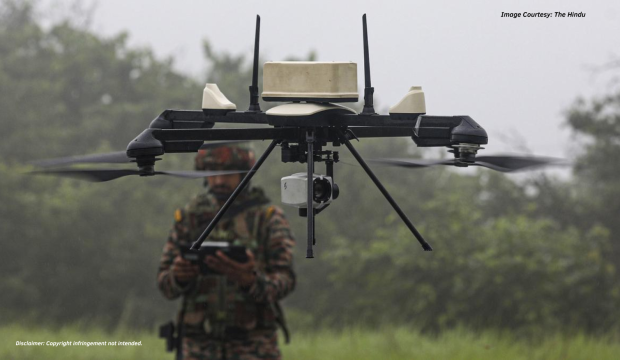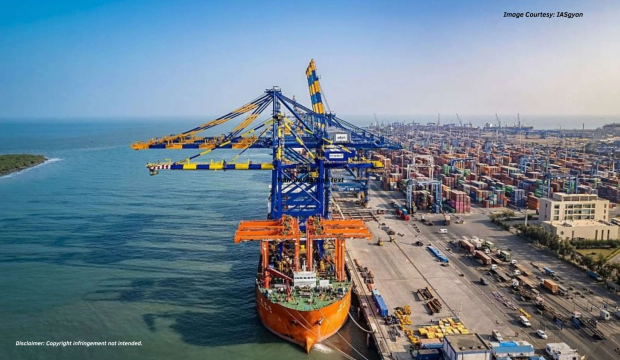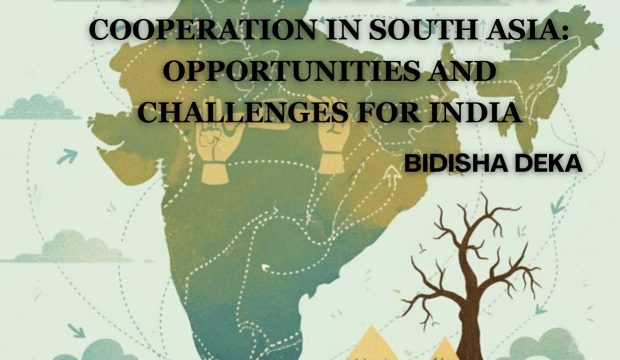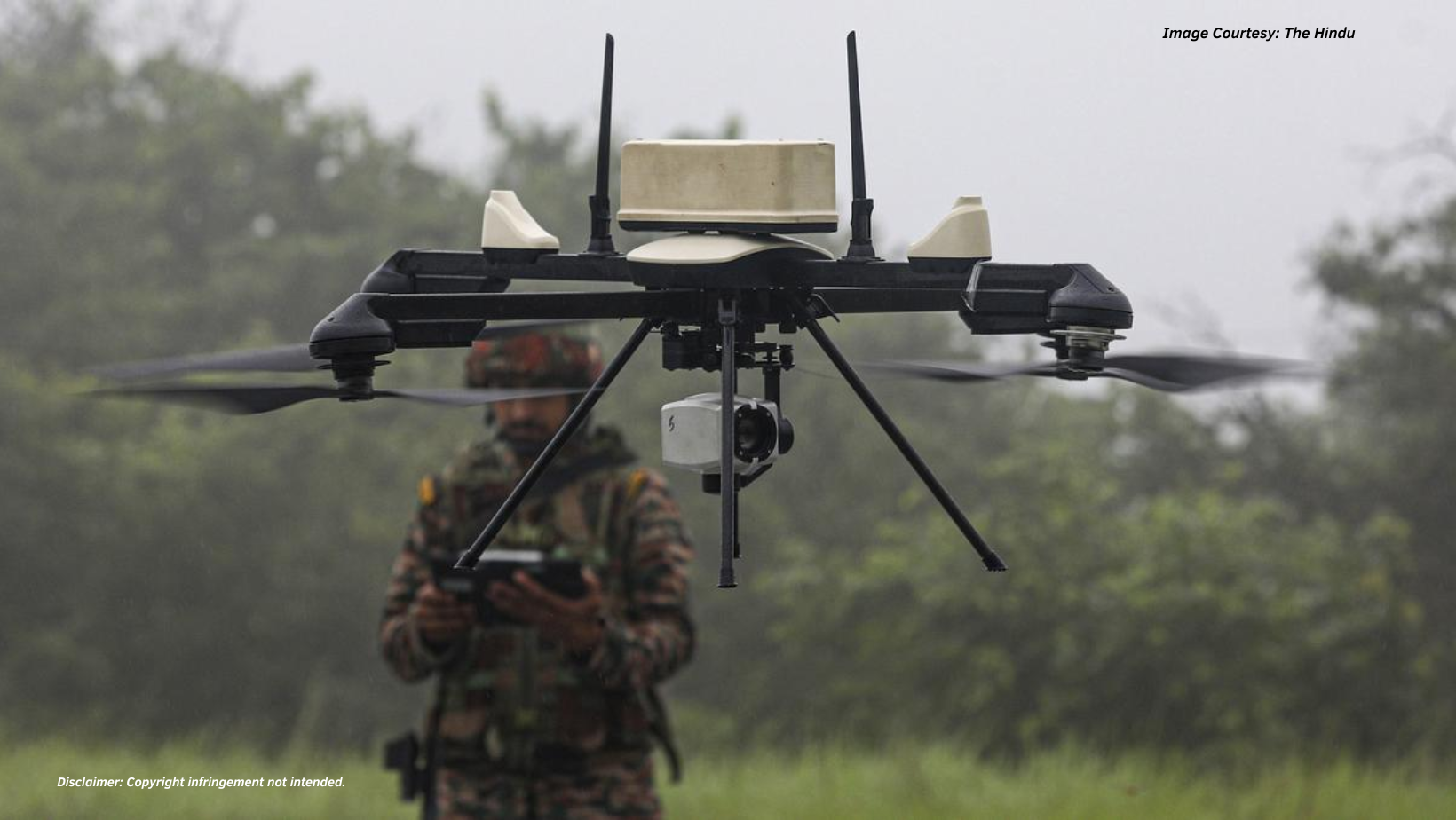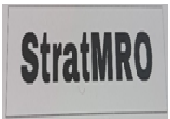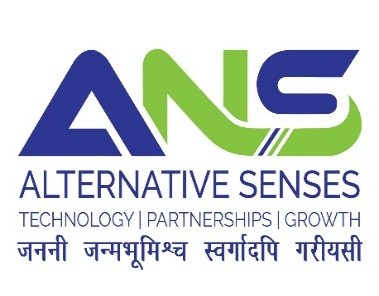Introduction
Indian Government over the last decade has traditionally started its term with an impact, by having bilateral summits with neighbouring countries giving impetus to India’s Act East Policy. However, in his third term, the Indian Prime Minister has taken a strategic shift from addressing regional impression to global influence by visiting Russian President as part of 22nd Annual Summit. The Annual Summit by the two nations, was initiated by President Putin, in his visit to India in 2000. It has been a time tested, highly effective mechanism for taking stock of relations between two countries and charter the future course. After continuous engagement for nearly two decades, paving way to strong economic and diplomatic ties, this apex level interaction mechanism ceased after 2021. Apprehensions were mounted in last two years about India, not giving significance to Russia (Kumar, 2024).
The bilateral visit was in much speculation and criticism due to its significant timing as U.S. in the same timeframe, hosted a special NATO summit with Western sanction’s coalition members along with Mr. Zelenskyy in Washington, to deliberate upon the Russia’s actions in Ukraine and to showcase Russia as “isolated” (Haidar, 2024). US officials have expressed concerns upon the visit of Indian leader to Russia. The visit coincided with a deadly strike on a Kyiv children’s hospital, prompting sharp criticism from Ukrainian President and other western governments (Difficult, uncomfortable, 2024).
The visit has drawn India out from the shadows of long drawn speculations of waning its traditional special and privileged strategic partnership with a clear message to the west about India’s reflection of Strategic Autonomy and apprehensions of US clout. However, India’s bilateral summit with Russia indicates its commitment to act as a potential moderator in the region (kapur & Chalil, 2024).
Russia: The Friend in Need for India
India – Russia relationship draws it lineage from post-World War era and beginning of cold war, while India initiated Non-Alignment Movement. During this period, India was being boycotted from bilateral or regional partnerships either by the great powers or due to their influence on other states. At the same time, the convergence of the US, Pakistan, and China for strategic interests while split between China-Soviet relations paved way for emergence of strong ties between Soviet Union and India. Notwithstanding with the Russian cons with Pakistan, in 1960s, both the nations were drawn together, as both shared threat from Beijing (Menon & Rumer, 2022). Russia being a nuclear superpower and permanent member of United Nations Security Council (UNSC), exercises significant role in international diplomacy.
Russian arms have been vital to India since independence, as Pakistan was in receipt of arms from U.S. and China. Russia has been almost, the sole arms supplier to India post 1964. As of 2022, around 85% of the India’s military arms and equipment are of Russian origin. Over many decades, it has created Indian armed forces’ dependency upon Russian spares parts and upgrades on initial models of armour, aircraft and missiles. Arms deals have been converting into defence cooperations with joint production, transfer of technologies in alignment with India’s Make in India initiative. Therefore, it will continue to remain as an important component of bilateral relations (Menon & Rumer, 2022).
Russia has significant share in building public sector of Indian economy through its technical assistance, especially in steel manufacture, heavy metal industry and power generation. This has been a key factor in emergence of Indian industries in an era, when US, who was chief patron of private enterprises, was not so eager to foster the state-run sector of Indian economy. Presently, Russia is master of cliché technology which is critical for diplomatic leverage as well as sustenance of the economy like defence and energy sectors, that too in favourable economic terms.
In the present era of crisis for energy and rare earth elements, Russia holds prominence due to its immense natural and energy resources along with considerable geopolitical weight. Dealing with energy crisis not only requires abundant resources but also capability to produce and supply in all kind of situations and sanctions, which requires strategic influence. In contrast, Iran despite the resources is not able to exploit them due to lesser diplomatic support. On the other hand, Russia has been able to sustain and outclass its production and supply amid global sanctions. Russia is a leading producer of oil, natural gas and rare earth metals like Palladium, making it a key global player. Hence, it plays a vital role in influencing international energy markets and global political dynamics (kapur & Chalil, 2024).
Strategically located at the crossroads of Europe and Asia i.e., hub of developed countries and hub of future global markets, Russia provides an exclusive perspective in shaping regional dynamics and global politics (kapur & Chalil, 2024). Due to its sheer size and geography, it provides numerous opportunities to India, either in terms of opening doors for Artic Region through Northern Sea Route with access to Russian ports, or alternative to traditional shipping routes. Therefore, Russia’s importance cannot be undervalued and only going to increase further with the climatic change and geopolitical shifts.
Shift in Geo-Politics Post Russia - Ukraine Conflict
Clouds Over Bilateral Relations
The Russia Ukraine war had put India walking on a tight rope for not condemning Russian actions, drawing lots of criticism. However, India was able to pass the test of time due to its actions of not supporting Russia as well, while advocating for calling ceasefire and resolution through dialogue. Indian Prime Minister quote to Russian President “Now is not an era of war, let’s talk peace” during SCO meet in Samarkand, Uzbekistan paved way for India’s neutral stand on the war (Moorthy, 2024). India, in order to maintain geo political balance, stopped the annual bilateral summit with Russia. Russia’s enhancing ties with China, further raised cautions in the bilateral relations with India. Russian actions including visit of Russian President to North Korea and Vietnam has been restraining India from showcasing support. At the same time, not forcing India to condemn Russian actions reflecting its Strategic Autonomy and continuing bilateral trade mainly in terms of oil in the garb of stabilizing the global market. However, lack of bilateral dialogue created much speculation amongst Russian administration about India’s intentions (Kumar, 2024).
Diverging Interests: India & Russia
India and Russia saw divergence in their mutual interest post the Russia – Ukraine war as both countries have been in pursuit of their national interests. Russia desires to keep NATO forces away from its territorial borders and maintain a buffer zone in terms of a neutral nation (Ukraine) and the same has been the jus-ad-bellum for Russia’s offensive actions. It is also an attempt by Russian President Putin to reaffirm its stature in the international arena as a military super power reminding its adversaries of Russia’s prowess in a world gradually tilting towards west specially the US. The raising anti Putin under currents in Russia have been overshadowed and put to rest by the strong nationalist sentiments from the war.
On the other hand, India’s focus on its economic journey, military modernisation, reduction of trade deficits, energy security was adversely affected by the global fallout of war. India’s dependency on Ukraine with respect to food grains, rare earth metals, military hardware and wide student diaspora could not be ignored either. Its international reputation as an emerging global leader and stance of strategic autonomy was jeopardized if it supported invasion of a sovereign country, no matter what the reason may be. India chose to retain its historical consistency of views on non-alignment, Palestine issue and conflict in Afghanistan etc on the Russia Ukraine conflict as well by maintaining neutrality. By not showing itself part of the Russian block, India exhibited its diversion of interest from Russia and in the bargain successfully navigated western ire.
The China Factor
Russian plan for full scale invasion on Ukraine did not succeed as expected. In order to influence European countries against supporting Ukraine and its own international isolation, Russia discontinued its gas exports to Europe. However, Europe managed to wean itself from Russian supplies instead of being played by Russian ploy through substituting gas from other countries, like US and replacing it with other sources of energy. Hence, Russia faced a challenge of having huge production but a smaller market. Russia was rescued by Asian powers specially China in terms of gas and India for oil. However, the major difference between the trade between Russia with India and China is the trade deficit. In the wake of global isolation, Russia also required supplier for domestic market and sustaining supply chain for war with Ukraine. China played a critical role in fulfilling this place while India failed to do so due to many factors including lack of Indian businesses in Russia due to fear of sanctions (Foucart, 2024).
Russia exports minerals like Gold, Steel and Platinoids, while China is exporting Alumina to Russia, which has critical applications in war waging weapons. After initial decline of trade post Ukraine invasion, Chinese exports increased significantly to Russia including electronics, vehicles, machinery, metals, rubber and plastics (Essen, 2023). China championed the western sanctions by supplying indirect support to Russian war supplies through dual use items worth more than $300mn every month – which had both commercial and military applications. Reports of possible use of Chinese satellites on Ukraine frontline for intelligence, have also surfaced. Trade between the two countries reached all time high at $240bn in 2023, with imports from China amounting $111bn while its exports to China being $129bn. The two nations are trading in their own currencies for 90% of trade (Ng & Ma, 2024). With 64 percent surge in bilateral trade, almost negligent trade deficit and limited supplier available to Russia, the Chinese administration takes upper hand making Russia dependent. A nuclear armed superpower being dependent on another aspiring superpower like China is not in favour of any global power, especially India.
India’s relations with China have been more than turbulent in last five years particularly post Galwan. The crisis still continues with enhanced troops deployment by both nations at borders and non-yielding peace negotiations. China has been trying to exert pressure on India directly and indirectly to succumb to its territorial claims and establish unchallenged hegemony in south Asia. India has mobilised additional armour and air assets towards Eastern Ladakh to meet any contingency. These assets are primarily of Russian origin and require seamless Russian support to sustain prolonged deployment in harsh terrain and any eventual conflict. Pakistan is playing Chinese proxy with overt support in term of finances and military hardware from China by intensifying terrorist activities in Indian UT of J&K. In such a two front threat scenario and China at the centre of India’s hostile neighbourhood, importance of Russia has become more prominent to neutralise China-Pakistan collusion.
Leverage with the US
Over past one decade, there has been a convergence of mutual interest between India and US over Indo pacific region and dismantling the Chinese hegemony in the region. Regardless of difference in the reasons, both countries share strategic partnership to fulfil their national interests. This strategic partnership has been one of the major factors for US tolerance to India’s close relation with Russia. However, the Ukraine conflict has provided an opportunity for US to weaken its oldest rival i.e. Russia. Off late, with changing geopolitical dynamics, China has emerged as a challenger and rival to US monopoly. US has successfully engaged India over the last decade in trade and military domain to gain leverage against China and distract India away from Russian dependency. India needs to encash same leverage with US to continue remain the fulcrum to contest Chinese hegemony in South Asia, maintain its strategic autonomy at the same time and carry forward its engagement with Russia.
Impact of Western Sanctions
The western sanctions following Russia- Ukraine conflict had isolated Russia from global trade market. The first step taken by removing Russian banks from Swift ensured delinking them from international financial system and devoid them of global operations. The intention was to repudiate Russian businesses and disrupt transactions for their vital trade of agrarian & energy products and imports of military raw material and supply chain (Shrivastava & Pillai, 2024). However, the Russian exports contributing for elementary global sustenance in fields of energy, fertiliser, food grain and rare earth metals, influenced the global prices drastically. India – Russia jointly managed to bypass the sanctions with switching the transactions into rupee and routing them directly through vostro accounts instead of Swift (Suresh & A, 2023). Although it helped India in reducing its dependency on dollars but at the same time, led to devaluation of Rupee in global market. It has emerged as next issue between the two nations since the usage of Rupee is limited to fewer countries and the trade deficit between both nations are increasing manifolds (Suresh & A, 2023).
Oil Trade Imbalance
India is third largest importer of crude oil in the world. Rise in global oil and gas prices have affected the Indian power sector adversely. Indian companies have projects in Russia but not seeking expansion due to ongoing conflict. Increasing crude oil and natural gas prices have severely impacted inflation and economic development. In such situation, Russian offer of their oil at a discount price was inescapable. In 2021, Russian crude oil, which was only 2% of total Indian import, has now sharply increased to almost 44% of total imports (Shrivastava & Pillai, 2024). The trade between both countries amounting to $65bn has been majorly composed of oil imports from Russia while Indian exports have virtually not changed due to the fear of sanctions creating huge trade deficit. These complexities have been aggravated by the Rupee- Rubble model of payment with excessive rupee accumulated at the Russian end with no product to purchase from India.
Crisis in Food and Fertiliser Supplies
Russia exports around 13% of global fertilizer goods across the world. Fertilizer shortage was accentuated due to Covid Pandemic and resultant lockdowns. The Fertilizer prices were further increased due to surge in demand, coal and natural gas prices and drop in production capacity. The main ingredients used in fertilizers are being produced in Russia and Belarus. Limited nations manufacturing significant portion of the fertilizers, which can be traded internationally, made the industry susceptible to trade shocks. Russia and Ukraine alone, exports a quarter of global wheat total. Both countries account for nearly a fifth of total grains exports and around 80% of sunflower oil exports globally. Western sanctions and interrupted supplies led to surge in wheat, grains and oil prices, increasing the inflationary strain on global market. Although being self-sufficient for food crops, the brunt of Fertilizer and Sunflower oil shortage was faced by India as well. Military actions with warships sailing in Black Sea region, which is the main transportation depot for important goods, disrupted the trade route (Shrivastava & Pillai, 2024).
Rare Earth Metals
Several raw materials used for manufacturing of complex and advanced machinery are affected due to war in terms of supply and price. Palladium, a crucial material used in engine exhausts to reduce emissions is produced in Russia. Russia and Ukraine produce titanium sponge which is about 15% of global production and used in manufacturing of aircrafts. Ukraine alone yields 70% of global Neon and Helium production which are used in manufacturing of chips. Ukraine is also a major exporter of Krypton and Xenon. Shortage of raw materials due to the war has directly impacted semiconductor sector with indirect effect on automobile, aerospace and other complex sectors (Shrivastava & Pillai, 2024).
Defence Cooperation
Russia has been sharing legacy of a large Soviet and Russian defence systems in weapon profile of Indian Armed Forces. The Indian Armoured Corps primarily consists of T-72 and T-90 tanks from Russian origin. The Indian Airforce fleet of MiG 21 is yet to be replaced while the mainstream aircrafts are still Su-30 and MiG-29 of Russian origin. India’s conventional submarines fleet are principally made of Soviet design. The most successful missile program of India i.e., Brahmos, is a joint venture of Russia- India. Hence, Russia is poised to remain a major defence partner for a long time even after Atmanirbhar Bharat (Menon & Rumer, 2022). However, In the wake of Ukraine war, the supply of spare parts and upgrades from Russia has dried up drastically due to its own consumption leading Indian Defence Supply chain vulnerable and exposed. The latest deal of S-400 systems is still awaiting transfer of two batteries post Ukraine war.
Highlights of 22nd Bilateral Summit
The 26 hours visit to address 22nd Bilateral Summit was highlighted by Russian President conferring Russia’s highest civilian honour, “Order of Saint Andrew the Apostle,” to Indian Prime Minister (Kumar, 2024). The summit apparently had in- depth discussions on the conflict with Ukraine, death of innocents and children and reasons for the prolonged military operations. India also voiced the expectations of Global South for peace, since it is one of the most affected regions due to global effects of this war.
The summit exhibited convergence against terrorism in all forms and expressions, stressing upon recent terrorist attacks both in India and Russia (Attack on Army convoy in Kathua region, Terrorists attack on Dagestan and Crocus City Hall in Moscow). It emphasised on further strengthening cooperation to combat terrorism by implementation of the Comprehensive Convention on International Terrorism under the UN agenda as well as the UNGA and UNSC resolutions on countering terrorism and extremism (Press, 2024).
The summit highlighted significant growth in bilateral trade of $65bn in 2023. India highlighted that Indian purchase of Russian oil was crucial in stabilizing global oil market and have kept the inflation in control. However, it also emphasised on achieving sustainable and balanced trade in longer duration between two countries, by consolidating industrial collaboration, forging new technical and investment partnerships to increase Indian exports to Russia, while setting a new target of $100bn bilateral trade without deficit (kapur & Chalil, 2024). Discussion was carried out on implementation of the initiatives, projects and activities as per Programme-2030 which will be coordinated by the IRIGC-TEC. Agreement was made, to continue promotion of bilateral trade using national currencies. Commencement of negotiations on bilateral free-trade agreement have also been directed. Coproduction for strengthening of manufacturing sector in automobile engineering, chemical industry, metallurgy and other sectors have been earmarked. Continuation of fertilizers supplies to India was agreed upon.
Both nations shared approach on a new framework of sustainable and efficient transport corridors, along with the expansion of manufacturing chains in Eurasia. Expanding logistics chain with stress on increasing infrastructure capacity through the Chennai-Vladivostok Maritime Corridor, intensifying International North-South Transport Corridor (INSTC) and support on developing potential of Northern Sea Route was focused upon. Joint agreement was made to increase commerce in the Russian Far East and the Arctic zone. A Russia-India cooperation from 2024 -2029 was signed, providing the necessary framework (Press, 2024).
The expansion of Kudankulam nuclear power plants and related delivery of supplies was reiterated while a second plant site in India was discussed. Agreement was made on continuing Russian reactors VVER 1200 for the expansion, local production of equipment and components. Both nations confirmed their intent for wider assistance in fuel and life cycle support of nuclear power plants (kapur & Chalil, 2024). The 21st meeting of IRIGC-M&MTC will be held in Russia in 2024 under defence cooperation. Joint manufacturing will be done for spares & components of Russian origin arms/equipment and other products in India. Make-in-India program will be given push by transfer of technology and establishing joint projects to meet the requirements of Indian Forces, while further export will be through approval to friendly third countries jointly. A new working group will be established on scientific cooperation will be discussed during the upcoming meeting (Press, 2024).
Future of India - Russian Relations
India has been successful in conveying its stance to the west in crystal clear manner that it cannot be forced to pick sides while giving a relief to Russia for continuing its privileged and special strategic partnership. India has also succeeded in showcasing it neutrality by highlighting its disagreement with Russia, flagging loss of innocent lives during the war. Additionally, during latest G7 Summit, India’s engagement with Ukraine’s President, highlights India’s potential as a mediator for ceasefire. India’s mediation by leveraging its bilateral ties and strategic autonomy, can be a critical step towards resolution of this conflict and further stabilizing the world order (kapur & Chalil, 2024).
The supply of spares, upgrades and ongoing deals including S-400, are likely to be delayed until the war comes to an end. However, the Make in India initiative in Defence Sector may boost up with joint ventures and joint production of spares. In the long run, this boom in Indian industrial sector may also be instrumental in maintaining Russian supply chains as it will take substantial time to recoup its defence industry post war. The long-awaited Reciprocal Exchange of Logistics Agreement (RELOS) will be another major convergence extent in future, for simplified logistical support for military operations, including humanitarian aid. The Indian Navy would get access to Russian military facilities in the Arctic through RELOS while the Russian Navy would get aid during operations in the Indian Ocean. It will also help in the protection of the Chennai-Vladivostok Maritime Corridor when it is fully operationalized (Sharma, 2024).
India is in a huge trade deficit with Russia due to its cheap oil import and lack of Industrial investments in Russia. India needs to focus on increasing trade with Russia, however it needs a strategy to bypass the western sanctions. Unlike China, Indian industry is more dependent on western markets for exports rather western markets being dependent on Indian Industries. At the same time India needs to boost its manufacturing capacity to provide supply chain to Russia at competitive pricing. India – Russia bilateral trade has tremendous scope of growth, if India can develop its niche technology industry like semiconductors utilizing Russian abundance of raw material.
Russia is experiencing growing “Yuanisation,” where the role of Yuan in Russian economy is increasing entailing risks and vulnerabilities for Russia. Its isolation and dependence on China may lead to imminent crisis for the Russian state. The Russian exports to China in terms of energy is discounted with not much options with supplier while the imports are of inferior quality, expensive, and without any investments. Development, state budget and spending may all suffer (Essen, 2023). Hence, Russian state would also favour to decrease Chinese influence on its economy and diversify its trade on first opportunity which can be provided by India. India may emerge here as biggest aid to Russia in diversifying its economy.
Conclusion
The Indian Prime Minister’s visit to Russia is a stepping stone for the rejuvenated bilateral relations between India and Russia. Russia’s importance for India cannot be undermined as strategic partner for trade, defence and geo-political partnership. Its importance has grown manifolds in context of squaring off US influence in the region and maintaining strategic autonomy for India. It will be detrimental for India, as well as the west, to leave a nuclear superpower like Russia becoming ploy of aspiring superpower like China, due to global isolation and sanctions. Hence, it will be in favour of India and more importantly west, that a regional power like India, must continue engaging with Russia to counter balance Chinese influence and its collusion with Pakistan. India must strive towards strengthening its ties with Russia with solidarity while walking the tight rope of strategic autonomy to achieve its own national interest of mutual growth and sustained development.
DISCLAIMER
The paper is author’s individual scholastic articulation and does not necessarily reflect the views of CENJOWS. The author certifies that the article is original in content, unpublished and it has not been submitted for publication/ web upload elsewhere and that the facts and figures quoted are duly referenced, as needed and are believed to be correct.
References
- ‘Difficult, uncomfortable’: Biden admin ruffled by PM Modi’s Russia visit, hug with Putin. (2024, July 11). The New Indian Express.
- Essen, H. v. (2023, July 05). Russia-China Economic Relations Since the Full-Scale Invasion of Ukraine. Swidish National China Centre. Retrieved from https://kinacentrum.se/publikationer/russia-china-economic-relations-since-the-full-scale-invasion-of-ukraine/
- Foucart, R. (2024, July 01). Russia has become so economically isolated that China could order the end of war in Ukraine. The Conversation.
- Haidar, S. (2024, July 08). PM Modi’s Moscow visit: Five areas to watch closely. The Hindu. Retrieved from https://www.thehindu.com/news/national/pm-modis-moscow-visit-five-areas-to-watch-closely/article68381152.ece
- kapur, P., & Chalil, J. M. (2024, July 14). New chapter in India-Russia relations: PM Modi’s Moscow visit and its strategic implications. The Sunday Guardian. Retrieved from https://sundayguardianlive.com/opinion/new-chapter-in-india-russia-relations-pm-modis-moscow-visit-and-its-strategic-implications#:~:text=The%20historical%20ties%20between%20Russia,%2C%20energy%2C%20and%20technology%20sectors.
- Kumar, R. (2024, July 10). Modi in Russia: A game of optics, a loud message to the West. The Indian Express. Retrieved from https://indianexpress.com/article/opinion/pm-modi-russia-putin-ukraine-9444156/
- Menon, R., & Rumer, E. (2022). Russia and India: A New Chapter. Carnegie Endowment for International Peace.
- Moorthy, N. S. (2024, July 14). Much more than a bear hug: Analysing India-Russia relations. Firstpost.
- Ng, K., & Ma, Y. (2024, May 17). How is China supporting Russia after it was sanctioned for Ukraine war? Retrieved from BBC News: https://www.bbc.com/news/60571253
- (2024, July 09). Joint Statement following the 22nd India-Russia Annual Summit. Retrieved from Ministry of External Affairs: https://www.mea.gov.in/bilateral-documents.htm?dtl/37940/Joint+Statement+following+the+22nd+IndiaRussia+Annual+Summit#:~:text=The%20Sides%20underlined%20that%20India,sustainable%20and%20long%2Dterm%20partnership
- Sharma, R. (2024, July 11). India, Russia Fail To Sign RELOS – A Pact That Could Have Given Indian Navy Unrestricted Access To Arctic. The Eurasion Times.
- Shrivastava, V., & Pillai, A. A. (2024). Impact Of Russia-Ukraine War On India And World. Journal of Advanced Zoology, 45(S-4), 143-152. Retrieved from https://jazindia.com
- Suresh, A., & A, N. (2023, September 22). The rupee- ruble deal: What does reinvestment look like for Russia and India. Centre for Public Policy Research.




